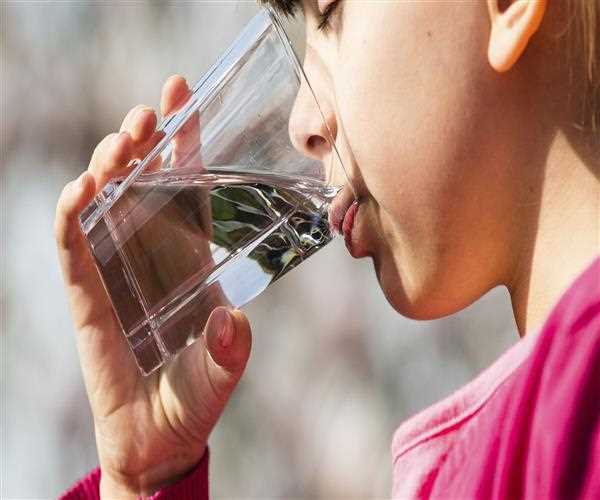Search here

06-Aug-2023 , Updated on 8/6/2023 10:00:45 PM
How chemistry has been used in everyday lives
Highlights
Water and Hydration
- Water's vital role in biological systems
- Importance of hydration for bodily functions
Food and Nutrition
- Chemical composition of nutrients (carbohydrates, proteins, fats)
- Digestion and metabolism processes
Cooking and Flavors
- Maillard reaction in cooking and browning of food
- Chemistry behind taste and aroma compounds
Cleaning and Detergents
- Surfactants and their role in removing dirt and stains
- pH balance and its effect on cleaning products
Medicines and Pharmaceuticals
- Drug interactions and metabolism in the body
- Importance of molecular structure in drug effectiveness
Cosmetics and Personal Care
- Chemistry of skincare products and cosmetics
- Sunscreen and UV protection mechanisms
Energy and Fuels
- Combustion reactions in fossil fuels
- Renewable energy sources and their chemistry
Chemistry is the study of matter and its changes. It is a vast and complex subject, but it is also one that is essential to our everyday lives. Chemistry is involved in everything from the food we eat to the clothes we wear to the way we get around.
Here are just a few examples of how chemistry is used in everyday life-
- Food
Chemistry is involved in every step of the food production process, from growing crops to processing food to cooking it. For example, the process of photosynthesis is a chemical reaction that plants use to convert sunlight into energy. This energy is then used to grow crops, which are then processed into food. When we cook food, we are causing chemical reactions that change the structure of the food and make it more digestible. Vitamins, minerals, and macronutrients are all products of biochemical interactions, highlighting the profound impact of chemistry on our dietary habits.
The Air We Breathe
The atmosphere that envelops our planet is a complex blend of gases, primarily nitrogen, oxygen, and trace amounts of other elements. The chemistry of respiration involves the exchange of oxygen and carbon dioxide in our lungs and bloodstream. Hemoglobin, an iron-containing molecule in our blood, binds to oxygen in the lungs and releases it to tissues, fueling cellular processes. This interplay of gases illustrates how the delicate balance of chemistry sustains life itself.
The Water We Drink
Water, a seemingly simple molecule composed of two hydrogen atoms and one oxygen atom, is essential for life. Its unique properties, such as high surface tension and heat capacity, are the result of hydrogen bonding. Water's ability to dissolve a wide range of substances, making it a universal solvent, is crucial for biochemical reactions in our bodies and for the transportation of nutrients and waste products. Water treatment processes, from chlorination to filtration, involve chemical principles that ensure the availability of clean and safe drinking water.

Energy Production and Consumption
The energy sources that power our modern world are deeply rooted in chemistry. Fossil fuels, such as coal, oil, and natural gas, are hydrocarbons formed from the remains of ancient plants and animals. The combustion of these fuels releases energy through chemical reactions, but also leads to environmental concerns such as air pollution and climate change. Alternative energy sources, like solar cells and batteries, rely on the chemistry of semiconductors and electrochemical reactions to convert sunlight or stored energy into electricity.
Medicines
Medicines are chemicals that are used to treat diseases. They work by interacting with the chemicals in our bodies. For example, antibiotics work by killing bacteria, while painkillers work by blocking pain signals. Medicinal chemistry involves designing molecules that interact with specific biological targets, such as proteins or enzymes, to achieve therapeutic effects. Drug metabolism, the process by which our bodies break down and eliminate foreign substances, is governed by chemical reactions. Vaccines, antibiotics, and pain relievers are all products of chemical innovation that have transformed healthcare and extended human lifespans.
Cleaning and Hygiene
The chemistry of cleaning products and hygiene items ensures our living spaces remain sanitary and comfortable. Surfactants, compounds that lower surface tension, are key ingredients in detergents, allowing them to break down grease and remove dirt from surfaces. Antimicrobial agents, such as alcohol and disinfectants, target the chemical structure of microorganisms to eliminate them. Understanding the chemistry behind these products enables us to maintain a clean and healthy environment.
Environmental Concerns
Chemistry also holds the key to understanding and addressing environmental challenges. The study of pollutants, their sources, and their effects on ecosystems involves chemical analysis and modeling. Acid rain, for instance, results from the interaction of sulfur dioxide and nitrogen oxides with atmospheric moisture, leading to chemical reactions that damage soil, water bodies, and vegetation. Environmental chemistry plays a crucial role in developing strategies to mitigate pollution and promote sustainable practices.
Electronics
Electronics are devices that use electricity to work. They contain a variety of chemicals, including semiconductors, which are used to conduct electricity. For example, computers and smartphones contain semiconductors that allow them to function.
Art and Conservation
Even in the realm of art and cultural heritage, chemistry finds its place. Conservation efforts often rely on chemical analysis to understand the composition of artworks, artifacts, and historical materials. Preservation methods, such as deacidification of paper documents or stabilization of fragile paintings, involve chemical treatments that ensure the longevity of cultural treasures for future generations.
In addition to the examples listed above, I am also listing out the several industries where chemistry have been used in everyday life-
- In agriculture, chemistry is used to develop fertilizers, pesticides, and herbicides. These chemicals help to improve crop yields and protect crops from pests and diseases.
- In manufacturing, chemistry is used to produce a wide variety of products, including plastics, textiles, and pharmaceuticals.
- In energy production, chemistry is used to extract oil and gas from the ground and to convert these fuels into electricity.
- In environmental science, chemistry is used to study the impact of human activities on the environment. This information is used to develop strategies to protect the environment.
Chemistry is a fascinating and important subject that has a profound impact on our everyday lives. By understanding chemistry, we can better understand the world around us and make informed decisions about the choices we make.

SEO and Content Writer
I am Drishan vig. I used to write blogs, articles, and stories in a way that entices the audience. I assure you that consistency, style, and tone must be met while writing the content. Working with the clients like bfc, varthana, ITC hotels, indusind, mumpa, mollydolly etc. has made me realized that writing content is not enough but doing seo is the first thing for it.
Join Our Newsletter
Subscribe to our newsletter to receive emails about new views posts, releases and updates.
Copyright 2010 - 2025 MindStick Software Pvt. Ltd. All Rights Reserved Privacy Policy | Terms & Conditions | Cookie Policy